 |
| Front cover |
 |
| Back cover (UK) |
 |
| The Beatles' Story |
In 1971, following his salvage project of the "Get Back" sessions, which was released as the group's Let It Be album, the Hollywood Bowl tapes were given to famed American record producer Phil Spector to see if he could fashion an album out of the material. Either Spector did not complete the job or his production was unsatisfactory, and the tapes continued to sit unreleased for another half a decade. Finally, with a rival record label's impending release of the Live! at the Star-Club in Hamburg, Germany; 1962 album consisting of a fifteen-year-old, poor-quality concert recording of the group performing in the Star Club in Hamburg, Capitol Record's parent company, EMI, decided to revisit the Hollywood Bowl recordings. Beatles' producer George Martin was handed the tapes and asked to compile a listenable "official" live album. He was impressed with the electric atmosphere and the raw energy of the recordings and set to work in January 1977 enhancing and transferring the performances to modern multi-track tapes.
In working on the three-track Hollywood Bowl concert tapes, Martin discovered quite a challenge. The first difficulty was finding a working three-track machine with which to play back the master tapes. Once he found one, he discovered that the machine overheated when it was running. Martin and recording engineer Geoff Emerick came up with the solution of blowing cold air from a vacuum cleaner to keep the tape deck cool whilst the recordings were transferred to 16-track tape for filtering, equalization, editing, and mixing. Martin found the August 29, 1965 recording virtually useless, and, except for a few dubs taken from the August 29 performance to augment other performances, the album compiled by Martin consisted entirely of songs recorded on August 23, 1964 and August 30, 1965. (The album cover somewhat blundered by showing the almost completely unused August 29 as the second date used.) In editing together the two performances, Martin successfully captured the excitement of a live Beatles concert with 17,000 screaming fans in this album.
The album was released in the UK on 6th May 1977 on the Parlophone label, with the catalogue number EMTV 4, due to it's inclusion in a TV advertising campaign. E.M.I. budgeted £200,000 of advertising on the Beatles release. The album was very welcomed by starved Beatles fans and sold well, it even returned the Beatles to the top of the album charts for one week, seven years after their last number one and seventeen years before their next.
The album was released by Capitol Records in the United States (catalogue number SMAS 11638) and hit No. 2 on the Billboard chart.
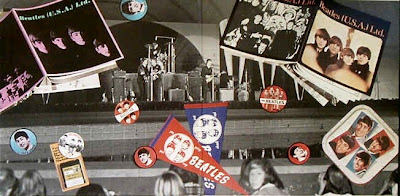 |
| Foldout spread. |
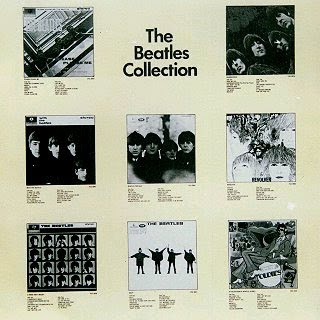 |
| The UK inner sleeve. |
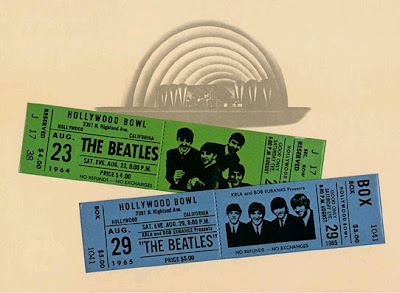 |
| detail. |
 |
| fake. |
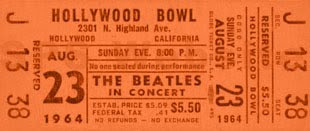 |
| real |
Even though the album sleeve says that the recordings were all made on August 23, 1964, or August 30, 1965, "Ticket to Ride" and "Help" were recorded on August 29, 1965, and "Dizzy Miss Lizzy" is a composite using parts from both nights in 1965.
Because The Beatles at the Hollywood Bowl was a compilation of two shows recorded a year apart, a number of songs performed at the two concerts were not included on the album. Songs from the 1964 show not included on the album are: "Twist and Shout", "You Can't Do That", "Can't Buy Me Love", "If I Fell", "I Want to Hold Your Hand", and "A Hard Day's Night". Songs from the 1965 show not included on the album are: "I Feel Fine", "Everybody's Trying to Be My Baby", "Baby's In Black", "I Wanna Be Your Man", and "I'm Down". "Baby's in Black", from the 1965 Hollywood Bowl concert, however, was issued as the B-Side of the 1996 reunion "Real Love" single.
On 3rd September 1984 the L.P. was re-issued on the E.M.I. budget label "Music For Pleasure", catalogue no. MFP 4156761. Three years later, when the Beatles catalogue was made available on CD, this album was not included, and it has never appeared on an official CD.
Side one
1. "Twist and Shout" (Phil Medley and Bert Russell) (Recorded 30 August 1965) – 1:32
2. "She's a Woman" (Recorded 30 August 1965) – 2:53
3. "Dizzy Miss Lizzy" (Larry Williams) (Recorded 29/30 August 1965) – 3:37
4. "Ticket to Ride" (Recorded 29 August 1965) – 2:51
5. "Can't Buy Me Love" (Recorded 30 August 1965) – 2:16
6. "Things We Said Today" (Recorded 23 August 1964) – 2:20
7. "Roll Over Beethoven" (Chuck Berry) (Recorded 23 August 1964) – 2:28
Side two
1. "Boys" (Luther Dixon and Wes Farrell) (Recorded 23 August 1964) – 2:12
2. "A Hard Day's Night" (Recorded 30 August 1965) – 3:15
3. "Help!" (Recorded 29 August 1965) – 2:46
4. "All My Loving" (Recorded 23 August 1964) – 2:14
5. "She Loves You" (Recorded 23 August 1964) – 2:31
6. "Long Tall Sally" (Enotris Johnson, Richard Penniman, and Robert Blackwell) (Recorded 23 August 1964) – 2:53
Total playing time was just under a half hour. George Martin also wrote the album's sleeve notes:
"Over twelve years ago the Beatles appeared for the first time at the Hollywood Bowl in Los Angeles. It was not long after they had made their first impact on the United States, but already two years after I had signed them to a record contract for EMI. Frankly, I was not in favour of taping their performance. I knew the quality of the recording could not equal what we could do in the studio, but we thought we would try anyhow.
Technically, the results were disappointing; the conditions for the engineers were arduous in the extreme. The chaos, I might almost say panic, that reigned at these concerts was unbelievable unless you were there.
Only three track recording was possible; the Beatles had no "fold back" speakers, so they could not hear what they were singing, and the eternal shriek from 17.000 healthy, young lungs made even a jet plane inaudible.
A year later, in 1965, John, Paul, George and Ringo appeared again at the Hollywood Bowl and again Capitol taped the show for posterity. And there the tapes remained for over a decade. Neither the boys nor I considered they should be used, because they consisted of titles that had already been issued as studio recordings. We often spoke of making a live recording, and in fact the ill-fated 'Let It Be' album began as an attempt to make a live record of new material.
It was with some misgivings therefore that I agreed to listen to those early tapes at the request of Bhaskar Menon, Capitol's president. The fact that they were the only live recordings of the Beatles in existence (if you discount inferior bootlegs) did not impress me. What did impress me, however, was the electric atmosphere and raw energy that came over.
And so, together with my recording engineer Geoff Emerick, I set to work to bring the performance back to life. It was a labour of love, for we did not know if we could make them good enough for the world to hear - let alone John, Paul, George and Ringo.
We transferred the vintage three track tapes to modern multi-track, remixed, filtered, equalized and generally polished the tapes. Then, by careful editing from the two performances, we produced the performance that you hear now. Obviously there has been no redubbing; all the voices and instruments are the original performance (some of the vocal balances with three singers on one track is evidence enough), but it is a piece of history that will not occur again.
Those of us who were lucky enough to be present at a live Beatle concert - be it in Liverpool, London, New York, Washington, Los Angeles, Tokyo, Sydney or wherever - will know how amazing, how unique those performances were. It was not just the voice of the Beatles; it was expression of the young people of the world.
And for others who wondered what on earth the fuss was about, this album may give a little clue. It may be a poor substitute for the reality of those times, but it is now all there is.
In the multiplatinum, sophisticated world we live in today, it is difficult to appreciate the excitement of the Beatles breakthrough. My youngest daughter Lucy, now nine years old, once asked me about them. 'You used to record them, didn't you, daddy?' she asked, "were they as great as the Bay City Rollers?' 'Probably not,' I replied. Some day she will find out.
Those who clamour for a Beatle reunion cannot see that it can never be the same again. The boys in their own way gave a great deal of their lives to us by being Beatles. And now they have found their own individual selves. Good luck to them. I am very proud to have been part of their story.
Thank you John, Paul, George and Ringo."
 |
| Early CD bootleg. |




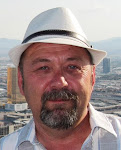












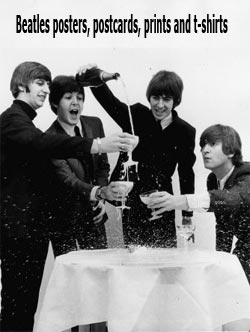













3 comments:
That is a great sounding live record. I got it back in the early 80's when I was about 13 and wore that record out. I wish I had taken care of the record, I still have it, but only listening to cd's now. I'll have to get one bootlegged that is transferred to cd. thanks for reminding me of a great Beatle memory.
Doug Kilishek
http://applejamming.netne.net
I have an original copy of the Beatles at the Hollywood Bowl album pressed in Venezuela by EMI Records in 1977 and wish to appraise it but have not been able to...it is in excellent condition and in its original cover...I will appreciate any help
Nobody's ever quite realised the importance of this album at the time of its release. Being smack in the middle of punk, it should have been an illustration of what was being turned over but actually, if anything, it provided defence because of the speed at which these tracks were being performed (punk speed!), the very reason that the band had previously ruled out releasing a sixties release of the tracks.
I thoroughly remember walking into the legendary 'Good Vibrations' shop in Belfast (home of irish punk) and there being this very loud band on with a lot of screaming.
As I had recently discovered the beatles, I should have recognised who it was straight away but the track, one of the covers they played, was unfamiliar to myself and other schoolboys currently being swayed into punk rebellion.
When a Beatles song came on next, we actually asked the celebrated shop and record label owner, Terri Hooley who it was and he looked at us as if we were idiots. 'It's The Beatles'.
I remember us all being quite stunned.
Post a Comment